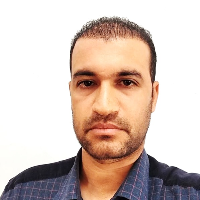Investigating the quality of potable groundwater in rural areas using geostatistical analysis in geographic information system - Case study: Ardabil City
Assessments of water quality have recently developed and now include surface and groundwater pollution issues. Permanent changes occurring in the quality of groundwater, especially those affecting drinking water and salinization of water sources, are considered to be a serious threat to rural development. Unfortunately, many people lack enough knowledge about the importance of groundwater and the harmful effects of environmental pollution on these valuable resources. The present study has investigated the quality of potable groundwater in the rural parts of central Ardabil County using multi-criteria decision-making models and geostatistical analysis in GIS environment. Parameters such as EC, PH, SO4-, Cl-, Na and TH (in terms of CaCo3) have been used to create an overall picture of the quality of potable groundwater resources in Ardabil County based on which related zoning map was developed in geographic information system. The kriging interpolation method was also used to obtain the spatial distribution of the parameters and the simple additive weighting method was used to weigh and rank the layers. According to the final map of water quality, approximately 36% of the central Ardabil County (around 88 square kilometers, mainly in the southern part of the study area) has access to optimal quality of drinking water. On the other hand, low quality of drinking water is observed in the northern and northeastern parts which cover 46% of the study area (112 square kilometers). Moreover, a direct relationship is observed between the population density and the density of deep and semi-deep wells and the decrease in the quality of water.
The present study has applied library research and field study methods. Rstudio and Arc GIS 10 software were also used to perform related analyses. Study Area Case study area includes 243 square kilometers of the central Ardabil County consisting of three cities and nineteen villages as illustrated in Figure 1. The following methods were used in this research:1- Direct rating 2- Kriging interpolation 3- Standardization method 4- Simple weighing method 5- Fuzzification of the final data The following parameters have also been used to assess the quality of drinking water:1- Electrical conductivity (EC) 2- Chlorine level (Cl-) 3-The amount of sulfate (SO4+) 4- The amount of nitrate (Na) 5 Total water hardness(TH) 6- Water acidity level (PH)
Groundwater chemical quality is primarily assessed using parameters such as changes in the amount of dissolved salts, and limitations on various uses of water especially water used for drinking. Table 1 shows different types of conventional kriging methods selected through the method test for the parameters. These can be obtained using the mutual evaluation method and RMS error. Factors affecting the quality of drinking water are then ranked and weighted according to the expert opinions. The final quality map is thus prepared. Layers are then standardized in accordance with data description and the results are presented in Table 1. It also exhibits maximum permissible and desirable level of non-toxic chemicals in drinking water in accordance with the Iranian Standards and Industrial Research Institute (ISIRI) and the World Health Organization (WHO) standard, along with the maximum permissible level of mineral substances in drinking water. Semivariograms used for kriging interpolation are also presented. Table 2 shows the RMS and RMSE errors as well as the average standard error of the water quality parameters in the study area. The interpolated primary layers are presented in Figure 3. The final map prepared for the quality of potable water in the study area indicates that the quality of groundwater in the northern part and a little section of the central part (46% or 112 square kilometers of the study area) is unfavorable. This includes 8 villages of the County. 6 villages have access to drinking water with semi-optimal quality and 5 villages are located in the optimal area of water quality. Accordingly, the quality of potable groundwater decreases drastically as we move towards the northern and northeastern parts of the study area, and the lowest quality of groundwater is observed in the most northerly part of the study area (covering 46% of the study area). Figure 4 shows the density of deep and semi-deep wells, the amount of annual harvest from rivers in the central part of Ardabil (in thousand cubic meters per year), the population density and industrial areas in this region. A direct relationship is therefore observed between population density, the density of existing wells, the level of water extraction from rivers and the sharp drop in the quality of groundwater. According to the reports prepared by Ardabil Regional Water Company, around 32 million cubic meters of water is annually needed to meet the drinking requirements of urban and rural uses, which can seriously damage the quality of underground water in the area.
According to the final map of groundwater quality, only 36% of the study area (88 square kilometers) has access to drinking water with favorable quality which can be a great concern for planners and managers. Finally, it is suggested to use geostatistical methods and geographic information system as a useful tool to assess the quality of underground water. These methods can gradually replace the old methods and thus prepare more accurate statistics, increase the efficiency of water-related projects, and reduce their cost.
- حق عضویت دریافتی صرف حمایت از نشریات عضو و نگهداری، تکمیل و توسعه مگیران میشود.
- پرداخت حق اشتراک و دانلود مقالات اجازه بازنشر آن در سایر رسانههای چاپی و دیجیتال را به کاربر نمیدهد.



